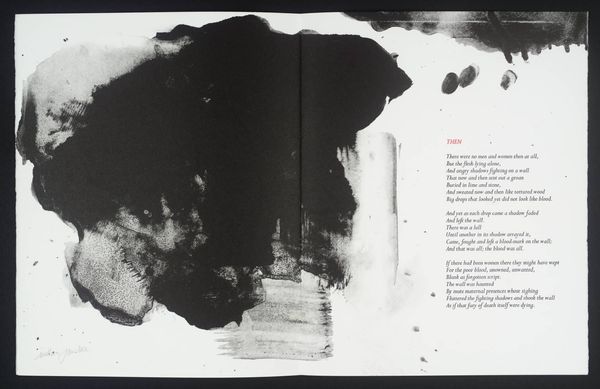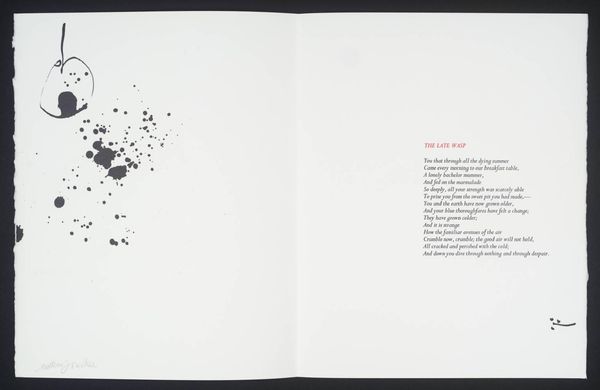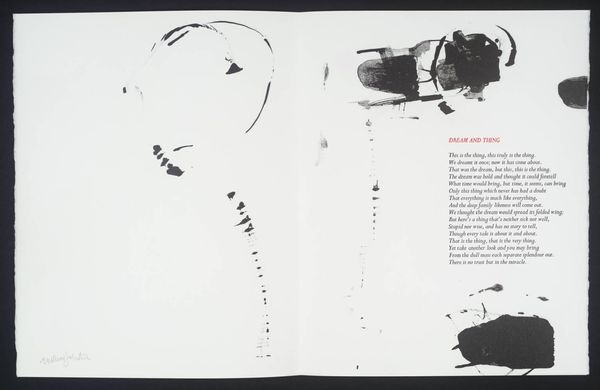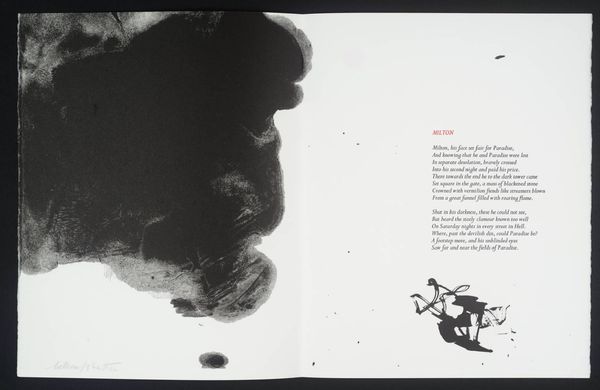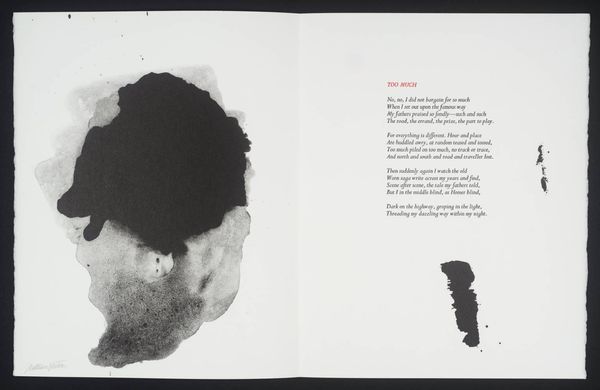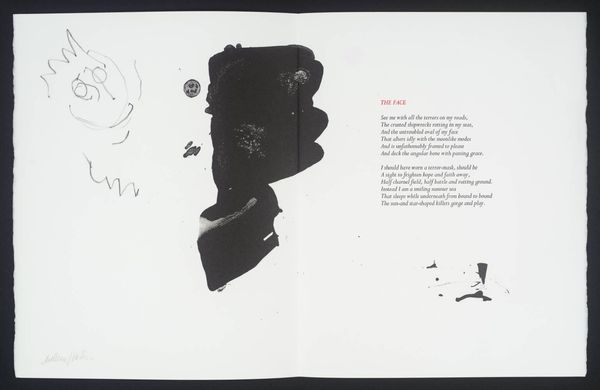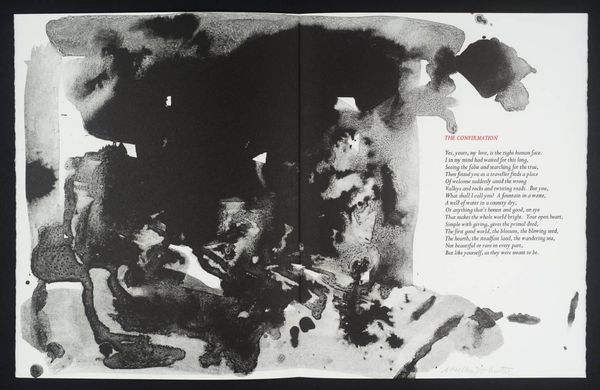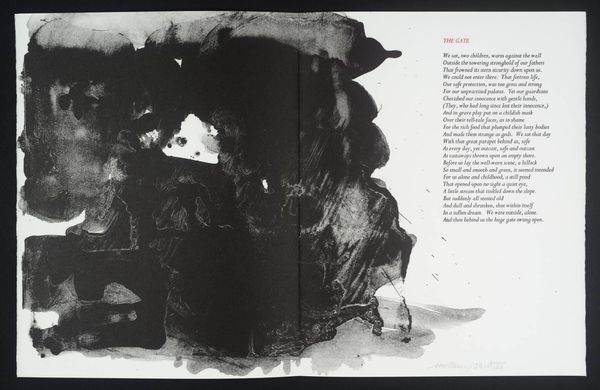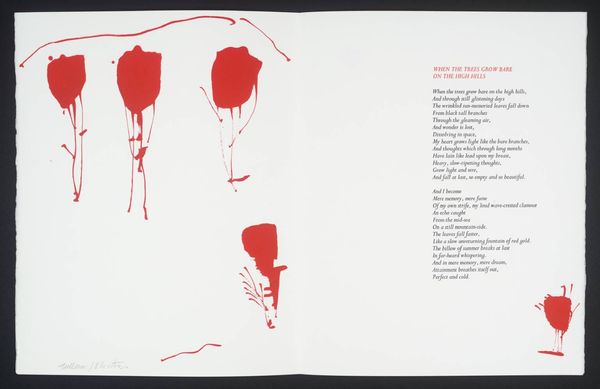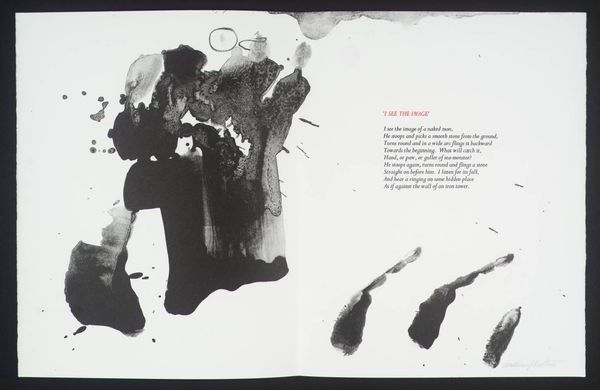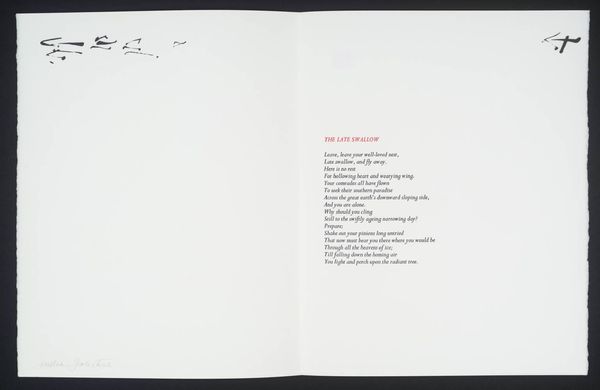![[title not known] by William Johnstone](/_next/image?url=https%3A%2F%2Fd2w8kbdekdi1gv.cloudfront.net%2FeyJidWNrZXQiOiAiYXJ0ZXJhLWltYWdlcy1idWNrZXQiLCAia2V5IjogImFydHdvcmtzL2RjYTc0Y2VhLTZkMTQtNGMzZi04YzkzLTZiNmMyMTk5YjQ3MS9kY2E3NGNlYS02ZDE0LTRjM2YtOGM5My02YjZjMjE5OWI0NzFfZnVsbC5qcGciLCAiZWRpdHMiOiB7InJlc2l6ZSI6IHsid2lkdGgiOiAxOTIwLCAiaGVpZ2h0IjogMTkyMCwgImZpdCI6ICJpbnNpZGUifX19&w=3840&q=75)
Dimensions: image: 324 x 511 mm
Copyright: © The estate of William Johnstone | CC-BY-NC-ND 4.0 DEED, Photo: Tate
Editor: This is an untitled work by William Johnstone. It looks like it may be ink on paper, and it's held in the Tate Collections. There's a dark, amorphous shape on one side and a poem called "The Annunciation" on the other. The overall feeling is quite somber and mysterious. How do you interpret this work in the context of Johnstone's life and times? Curator: Johnstone's work often grapples with the tensions between tradition and modernity, particularly within a Scottish context. How might we view this pairing of abstract form and religious text as a commentary on the changing role of faith in the 20th century? Do you see a critique of established structures or perhaps a search for new spiritual languages? Editor: I hadn't considered the Scottish context so directly. The abstract form does seem to resist easy interpretation, maybe reflecting a questioning of traditional beliefs. Curator: Exactly. The pairing invites us to consider how abstract art, like poetry, can offer alternative ways of understanding complex cultural shifts, and how artists engage with questions of identity through symbolism and form.
